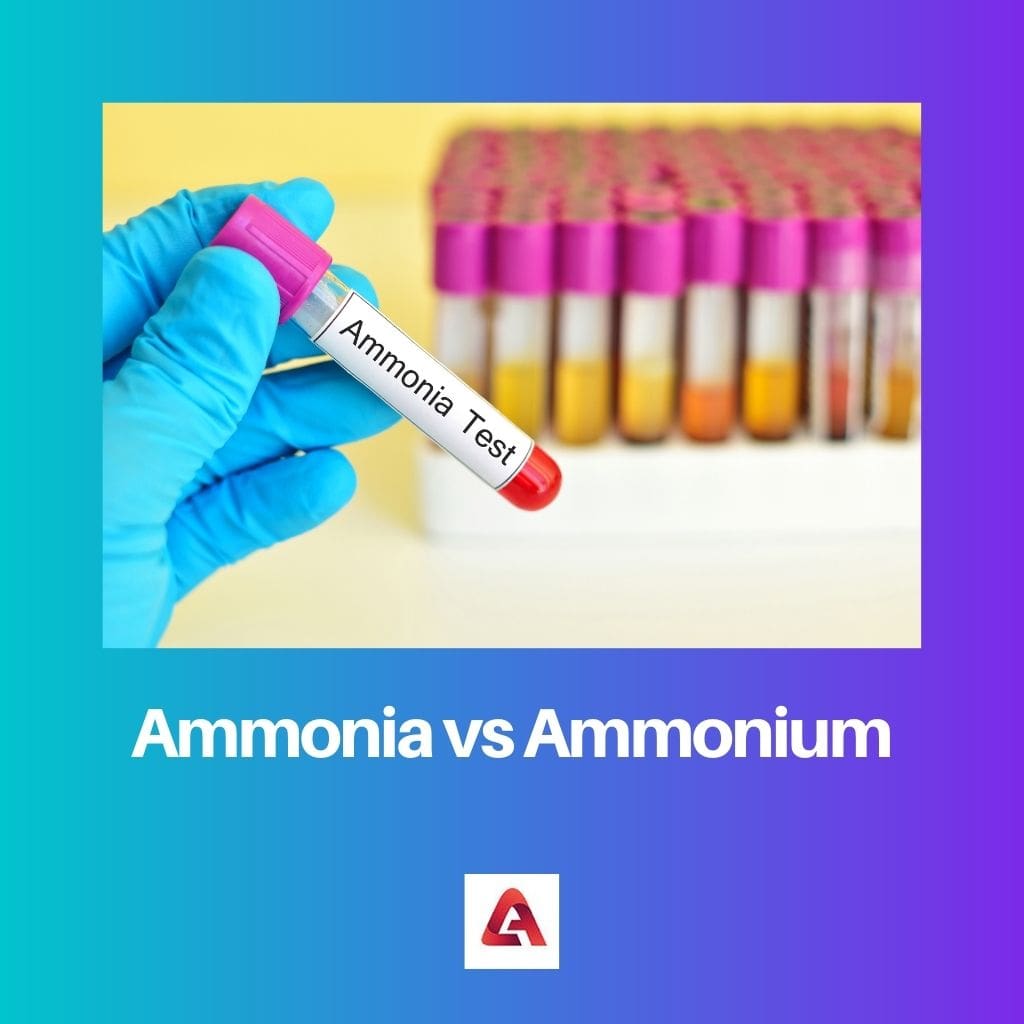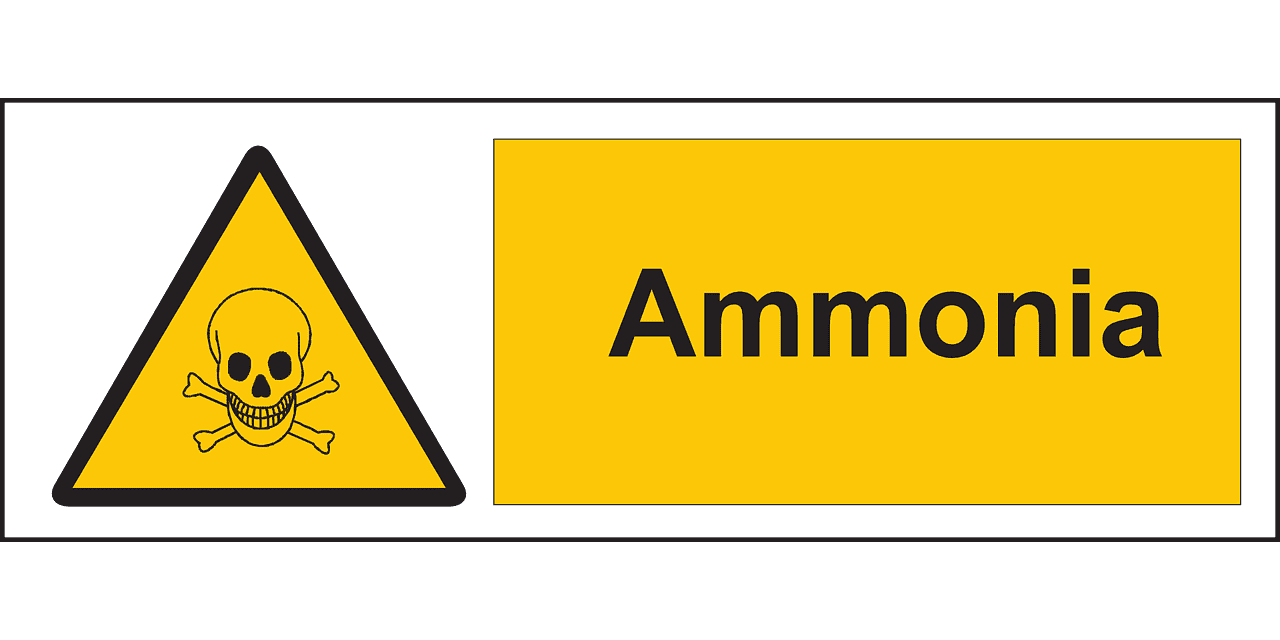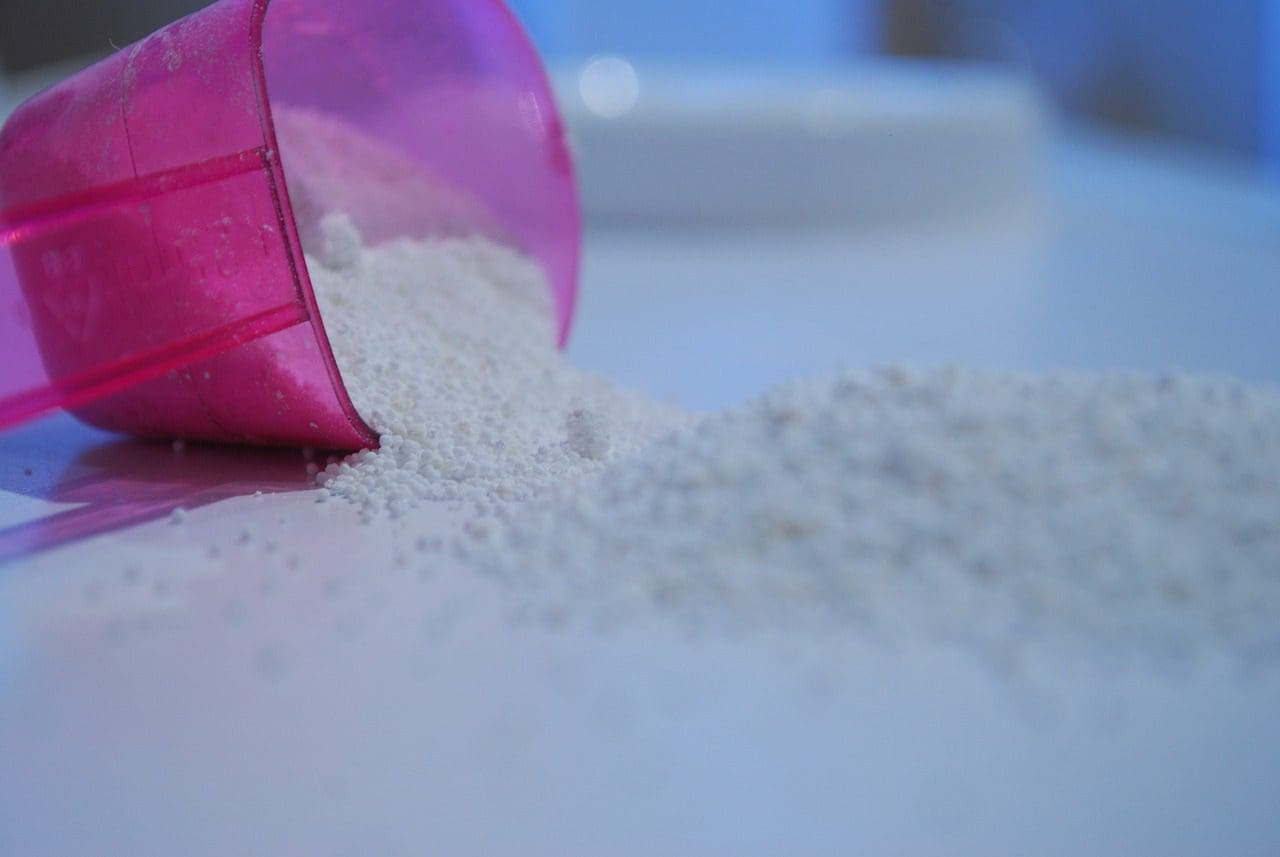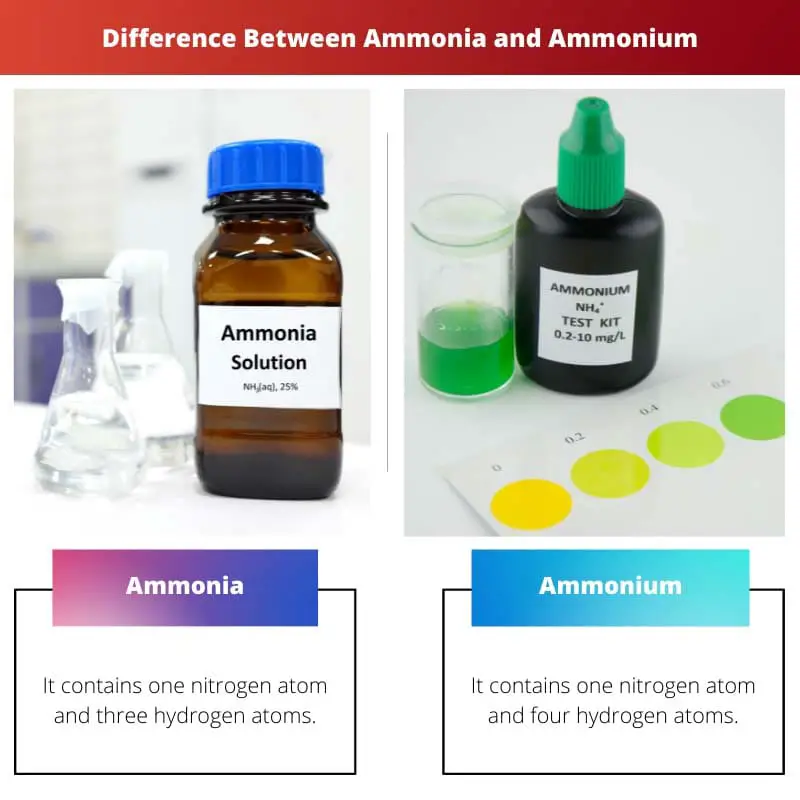Ammonia and Ammonium are compounds that contain the atoms of Nitrogen and Hydrogen. The number of nitrogen and hydrogen atoms is different in both of them.
They are greatly used in our day-to-day life.
Key Takeaways
- Ammonia is a chemical compound (NH3) that is a colorless gas with a strong, pungent odor, commonly used in cleaning products and as an agricultural fertilizer.
- Ammonium (NH4+) is the positively charged ion derived from ammonia when it combines with a proton, found in compounds like ammonium chloride and ammonium sulfate.
- Both ammonia and ammonium are nitrogen-containing compounds, but they differ in their chemical states and properties, with ammonia being a gas and ammonium existing as an ion in various compounds.
Ammonia vs Ammonium
The difference between Ammonia and Ammonium is that Ammonia comprises one nitrogen atom and three hydrogen atoms, whereas Ammonium comprises one nitrogen atom and four hydrogen atoms.

Also, Ammonia is un-ionized while Ammonium is ionized. One more noticeable physical difference between them is the smell they give off.
Ammonia gives out a strong smell if you go near it, whereas Ammonium does not give out any smell at all. A strong base must be added to the concentrated Ammonium salt solution to obtain ammonia.
Also, if water is added to ammonia and mixed, a portion will change into Ammonium. High concentrations of ammonia gas can be extremely hazardous.
Pure Ammonium cannot be found as it’s an ion, and it attaches to other charged atoms to complete its octane and become a neutral molecule. On the other hand, pure ammonia can be found.
Comparison Table
| Parameters of Comparison | Ammonia | Ammonium |
|---|---|---|
| Composition | It contains one nitrogen atom and three hydrogen atoms. | It contains one nitrogen atom and four hydrogen atoms. |
| Smell | Ammonia has a strong smell that anyone can smell if they go near it. | Ammonium does not have any strong smell or does not smell at all. |
| Toxicity | Ammonia is toxic and harmful to aquatic organisms. | Ammonium is not toxic or harmful to any aquatic organisms. |
| Ionized/ un-ionized | It is un-ionized. | It is ionized. |
| Uses | Ammonia makes fertilizers, cleansing products, plastics, pesticides and explosives. | Ammonium makes fertilizers, explosives, rocket propellants, water filters and food preservatives. |
What is Ammonia?
Ammonia is a molecule that is made up of one nitrogen atom and three hydrogen atoms. It is un-ionized and has a weak base.
It also gives off a strong smell when you go near it. When dissolved in water, ammonia turns into aqueous ammonia.
When exposed to air, it changes into a gas. Ammonia is also toxic and harmful to aquatic organisms.
Pure ammonia can be easily found. It is used in the production of many things.
It makes fertilizers, cleansing products, plastics, pesticides and explosives.
Ammonia in fertilizers helps plants by fixing the absence of nitrogen in the soil. Ammonia is a building block for synthesising many pharmaceutical products directly or indirectly.
High concentrations of ammonia gas can be extremely hazardous and are only used by factories in significant quantities. In humans, Ammonia is a metabolic waste and a metabolic input throughout the biosphere.
For all living systems, Ammonia is a very important source of nitrogen. It is required to synthesise amino acids that build up the proteins.

What is Ammonium?
Ammonium is a charged molecule that is made up of one nitrogen atom and three hydrogen atoms. It is ionized.
The Ammonium cation is positively charged, and its chemical formula is NH4+. The protonation of ammonia produces ammonia.
To do this, ammonia is dissolved in water, where some of it converts into Ammonium cation. It also does not have any specific smell to distinguish it.
Unlike Ammonia, Ammonium is not harmful or toxic to aquatic organisms. A person can never come across pure Ammonium as it is a cation, and cations cannot exist freely.
Generally, Ammonium cation can be found in a wide range of salts like ammonium carbonate, chloride, and ammonium nitrate. Almost all of the ammonium salts dissolve in water.
Ammonium is not considered a good source of nitrogen for plants, but it also is a source of nitrogen as it can be toxic to plants. It is widely used in the production of fertilizers and explosives.
It is also used as a food preservative and in water filters. In rockets it is used as rocket fuel.
In animals, Ammonium cations are waste products and are excreted out. In the case of aquatic organisms like fishes, it is directly excreted into the water. In contrast, in sharks, mammals and amphibians, the ammonium is converted to urea which is less toxic and can be stored more efficiently and then excreted.






